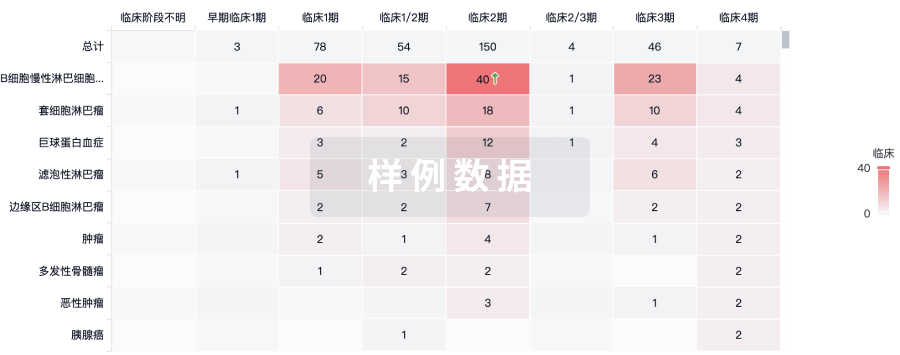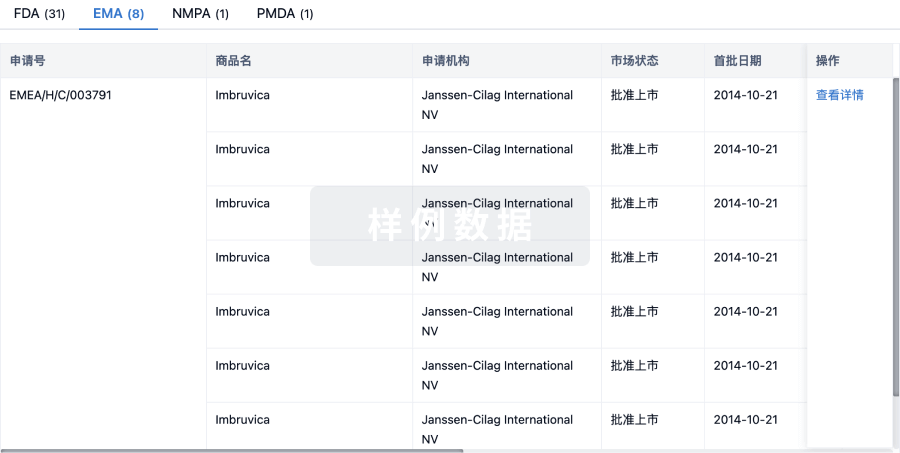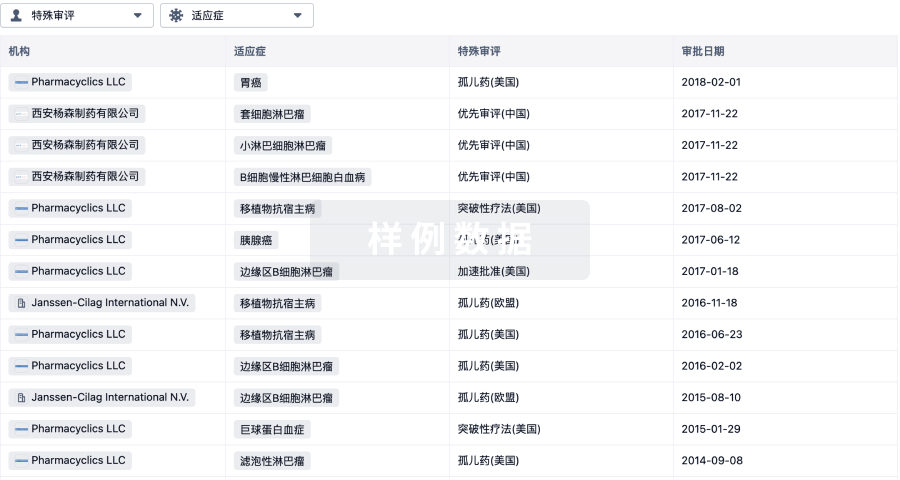预约演示
更新于:2025-07-04
Ibuprofen Lysine
布洛芬赖氨酸
更新于:2025-07-04
概要
基本信息
权益机构- |
最高研发阶段批准上市 |
最高研发阶段(中国)- |
特殊审评孤儿药 (美国) |
登录后查看时间轴
结构/序列
分子式C19H32N2O4 |
InChIKeyIHHXIUAEPKVVII-ZSCHJXSPSA-N |
CAS号57469-77-9 |
关联
9
项与 布洛芬赖氨酸 相关的临床试验NCT05340582
Co-administration of Acetaminophen With Ibuprofen to Improve Duct-Related Outcomes in Extremely Premature Infants - The ACEDUCT Trial
Patent ductus arteriosus (PDA), the most common cardiovascular complication of prematurity, is associated with higher mortality and morbidities in extremely low gestational age neonates (ELGANs, < 27+0 weeks). Ibuprofen and acetaminophen, which act by reducing prostaglandin synthesis, are the most commonly used first and second line agents for PDA treatment across Canada. However, initial treatment failure with monotherapy is a major problem, occurring in >60% ELGANs. Treatment failure is associated with worsening rates of mortality and bronchopulmonary dysplasia (BPD), while early treatment success can achieve rates comparable to neonates without PDA. Treatment failure resulting in prolonged disease exposure is thought to be a major contributor. Recently, combination therapy with acetaminophen and ibuprofen has emerged as a new treatment regime. Acetaminophen exerts anti-prostaglandin effect through a different receptor site than ibuprofen, providing a biological rationale for their synergistic action.
The objective of this study is to evaluate the clinical impact, efficacy and safety of combination regime (Ibuprofen + IV Acetaminophen) for the first treatment course for PDA in ELGANs vs. Ibuprofen alone (current standard treatment).
The objective of this study is to evaluate the clinical impact, efficacy and safety of combination regime (Ibuprofen + IV Acetaminophen) for the first treatment course for PDA in ELGANs vs. Ibuprofen alone (current standard treatment).
开始日期2022-12-12 |
申办/合作机构 |
IRCT20140527017880N8
Comparative evaluation of the effect of ibuprofen lysine & gelofen - acetaminophen on postoperative endodontic dental pain with irreversible pulpaitis
开始日期2019-04-21 |
IRCT20130812014333N131
comparison of the effect of ibuprofen lysine with gelofen-acetaminophen on postoperative pain of mandibular third molars surgery
开始日期2019-01-10 |
100 项与 布洛芬赖氨酸 相关的临床结果
登录后查看更多信息
100 项与 布洛芬赖氨酸 相关的转化医学
登录后查看更多信息
100 项与 布洛芬赖氨酸 相关的专利(医药)
登录后查看更多信息
25,549
项与 布洛芬赖氨酸 相关的文献(医药)2025-12-31·RENAL FAILURE
Acute kidney injury in hospitalized children with diphtheria in northwestern Nigeria: incidence and hospitalization outcomes
Article
作者: Ibrahim, Olayinka Rasheed ; Adedoyin, Olanrewaju Timothy ; Alege, Abdurrazzaq ; Alao, Michael Abel
BACKGROUND:
Despite the kidney being affected by diphtheria exotoxin, the extent of acute kidney injury (AKI) and its possible impact on outcomes remain unknown. This study examined the incidence, risk factors, and outcomes of AKI in children with diphtheria.
METHODS:
This was a prospective cohort study of confirmed diphtheria managed from July 1, 2023, to April 30, 2024, at a health facility in Nigeria. We obtained data on clinical and laboratory features and treatments received. AKI was defined using Kidney Disease: Improving Global Outcomes (KDIGO) criteria.
RESULTS:
We included 237 children with a median [interquartile range] age of 7.0 [4-10] years. Using KDIGO, 139 (58.6%) had AKI [stage 1:88 (37.1%); stage 2: 18 (7.6%); and stage 3: 33 (13.9%)]. Variables associated with AKI included age, sore throat, inability to swallow, difficulty breathing, nasal blockade, hypoxemia, nasal discharge, pallor, abnormal chest findings, hospitalization duration, vaccination status, white blood cells, lymphocytes, platelets, serum bicarbonate, sodium and potassium, and treatments received, p < 0.05. On multivariable logistic regression, predictors of AKI included age ≤ 60 months [AOR 2.75, 95% CI 1.27-5.95], dexamethasone [AOR 2.57, 95% CI 1.11-4.60], oxygen therapy [4.85, 95% CI 1.24-18.99], and ibuprofen [AOR 2.74, 95 CI% 1.16-6.44]. Mortality rate was 24.5% (58/237) and 33.1% (46/139) in AKI. The odds of deaths with AKI were 3.56 (95% CI 1.76-7.14).
CONCLUSION:
There is a high incidence of AKI among children with diphtheria and increased odds of death. Factors that predicted AKI included younger age, oxygen therapy, and medications (ibuprofen and dexamethasone).
2025-12-31·JOURNAL OF ENZYME INHIBITION AND MEDICINAL CHEMISTRY
Bioactivity profiling of
Sanghuangporus lonicerinus
: antioxidant, hypoglycaemic, and anticancer potential via
in-vitro
and
in-silico
approaches
Article
作者: Živanović, Nemanja ; Abdullaev, Ikram ; Abbasi, Arshad Mehmood ; Bekić, Sofija ; Ghosh, Soumya ; Rašeta, Milena ; Chen, Jia Jia ; Wan-Mohtar, Wan Abd Al Qadr Imad ; Gafforov, Yusufjon ; Mišković, Jovana ; Lim, Young Won ; Abdullaev, Bekhzod ; Yarasheva, Manzura ; Rapior, Sylvie ; Petri, Edward
This study investigates the mycochemical profile and biological activities of hydroethanolic (EtOH), chloroform (CHCl3), and hot water (H2O) extracts of Sanghuangporus lonicerinus from Uzbekistan. Antioxidant capacity was assessed using 2,2-diphenyl-1-picrylhydrazyl (DPPH), 2,2'-azino-bis-3-ethylbenzothiazoline-6-sulfonic acid (ABTS), NO, and FRAP assays, and in vitro hypoglycaemic effects were evaluated through α-amylase and α-glucosidase inhibition. Antiproliferative potential was explored by analysing the binding affinities of EtOH and H2O extracts to estrogen receptor α (ERα), ERβ, androgen receptor (AR), and glucocorticoid receptor (GR), with molecular docking providing structural insights. LC-MS/MS analysis revealed solvent-dependent phenolic profiles, with the EtOH extract containing the highest total phenolic content (143.15 ± 6.70 mg GAE/g d.w.) and the best antioxidant capacity. The EtOH extract showed significant hypoglycaemic effects, with 85.29 ± 5.58% inhibition of α-glucosidase and 41.21 ± 0.79% inhibition of α-amylase. Moderate ERβ binding suggests potential for estrogen-mediated cancer therapy, while strong AKR1C3 inhibition by the EtOH extract supports its therapeutic potential.
2025-11-01·APPLIED CATALYSIS B-ENVIRONMENTAL
Identification of reactive species and functional groups determining the selective oxidation of organic contaminants in Bismuth ferrate/peroxymonosulfate system
作者: Shao, Dan ; Zhang, Yuanyuan ; Rao, Yongfang ; Yan, Wei ; Cui, Jiahao ; Cui, Miaoying
The reactive species and functional groups determining the major reactive species contributing to the degradation of organic pollutants were identified in the Bi2Fe4O9/PMS (BFO/PMS) system.Competitive degradation, radical quenching experiments of organic contaminants, PMSO2 generation, Raman spectroscopy, 18O isotope labeling experiments and the comparison of sulfadiazine degradation intermediates suggest the generation of both free radical and high-valent iron in BFO/PMS system.The groups determining the high-valent iron oxidation pathways for different organic contaminants were identified resp. (acetaminophen: -OH, sulfadiazine: -NH2, diclofenac: -NH-, ciprofloxacin: -NH- and N-R3).The linear relationship between Hammett′s constants and the contribution of high-valent iron oxidation to the degradation of homologues under neutral condition was established.This study provides a novel insight into heterogeneous activation mechanisms of PMS and helps predict the fate of various organic pollutants carrying different functional groups during environmental remediation by the activation of PMS by iron-based catalysts.
4
项与 布洛芬赖氨酸 相关的新闻(医药)2022-09-26
·信狐药迅
每周药品注册受理数据,分门别类呈现,一目了然。新药上市申请药品名称企业名称分类受理号特瑞普利单抗注射液上海君实生物医药科技股份有限公司2.2CXSS21010582.2CXSS2101057依达拉奉舌下片南京百鑫愉医药有限公司2.2CXHS2101030新药临床申请药品名称企业名称分类受理号BT-114143注射液赛诺哈勃药业(成都)有限公司1CXHL2200487EG017片长春金赛药业有限责任公司1CXHL2200493GB5005嵌合抗原受体T细胞注射液上海吉倍生物技术有限公司1CXSL2200313GH55胶囊勤浩医药(苏州)有限公司1CXHL2200499GH55胶囊1CXHL2200500HT-101 注射液苏州星曜坤泽生物制药有限公司1CXHL2200498HTMC0435片上海壹典医药科技开发有限公司1CXHL2200509HTMC0435片1CXHL2200510HTMC0435片1CXHL2200511HTMC0435片1CXHL2200512HTMC0435片1CXHL2200513HTMC0435片1CXHL2200514IBI333信达生物制药(苏州)有限公司1CXSL2200295PM1009注射液普米斯生物技术(珠海)有限公司1CXSL2200312QY201片启元生物(杭州)有限公司1CXHL2200501QY201片1CXHL2200502RBD7022注射液苏州瑞博生物技术股份有限公司1CXHL2200451STI-6129注射液浙江艾森药业有限公司1CXSL2200326XH-5102片上海勋和医药科技有限公司1CXHL22005171CXHL2200518XTN003098深圳众格生物科技有限公司1CXHL22004951CXHL2200496XYP-001健康元药业集团股份有限公司2.2;2.4CXHL2200508靶向GPC3嵌合抗原受体自体T细胞注射液原启生物科技(上海)有限责任公司1CXSL2200304苯乙基异硫氰酸酯液体硬胶囊无锡杰西医药股份有限公司1CXHL22005251CXHL2200526德谷胰岛素注射液通化东宝药业股份有限公司3.3CXSL22003183.3CXSL2200319硫酸阿托品滴眼液艾尔健康眼药(辽宁)有限公司2.4CXHL22004722.4CXHL22004732.4CXHL2200474盐酸杰克替尼片苏州泽璟生物制药股份有限公司1CXHL19004421CXHL1900441盐酸米托蒽醌脂质体注射液石药集团中诺药业(石家庄)有限公司2.4CXHL2200497盐酸纳布啡注射液宜昌人福药业有限责任公司2.4CXHL2200505重组人源化抗TIGIT单克隆抗体注射液乐普生物科技股份有限公司1CXSL2200329注射用BAT8007百奥泰生物制药股份有限公司1CXSL2200330注射用KH617四川弘合生物科技有限公司1CXHL2200491注射用低分子量岩藻糖化糖胺聚糖钠牡丹江友搏药业有限责任公司1CXSL2200305注射用重组替度鲁肽重庆派金生物科技有限公司3.2CXSL2200316仿制药申请药品名称企业名称分类受理号阿卡波糖片贵州天安药业股份有限公司4CYHS2000627阿齐沙坦片兆科药业(广州)有限公司3CYHS2000702奥美沙坦酯氨氯地平片吉林省德商药业股份有限公司3CYHS2101010奥硝唑注射液山东达冠医药科技有限公司3CYHS21012023CYHS2101201康普药业股份有限公司3CYHS21010973CYHS2101096非那雄胺片华润赛科药业有限责任公司4CYHS1900865复方氨基酸注射液(20AA)内蒙古白医制药股份有限公司4CYHS1700480复方聚乙二醇电解质口服液舒泰神(北京)生物制药股份有限公司3CYHS1900137复方聚乙二醇电解质散(儿童型)3CYHS1900125甲苯磺酸艾多沙班片海南先声药业有限公司4CYHS21012334CYHS21012344CYHS2101235来那度胺胶囊石药集团欧意药业有限公司4CYHS2100208赖氨洛芬注射液四川维奥制药有限公司3CYHS2101904利伐沙班片上海普康药业有限公司4CYHS2101091利奈唑胺葡萄糖注射液重庆华邦制药有限公司4CYHS21018064CYHS2101804硫酸特布他林雾化吸入用溶液山东京卫制药有限公司4CYHS2101194氯巴占片宜昌人福药业有限责任公司3CYHS22004353CYHS2200436普瑞巴林缓释片齐鲁制药有限公司3CYHL2200057羟苯磺酸钙胶囊海南林恒制药股份有限公司4CYHS2101050他达拉非片南昌立健药业有限公司4CYHS2100255许昌高新制药有限公司4CYHS2000261碳酸镧咀嚼片南京正大天晴制药有限公司4CYHS2100288碳酸氢钠林格注射液西安万隆制药股份有限公司3CYHS1600153四川美大康佳乐药业有限公司3CYHS1600137吸入用乙酰半胱氨酸溶液江苏吴中医药集团有限公司苏州制药厂4CYHS1900365福安药业集团庆余堂制药有限公司4CYHS1900289江苏康缘药业股份有限公司4CYHS1900069山西优胜美特药业有限公司4CYHS1700604河北仁合益康药业有限公司4CYHS1700541缬沙坦氨氯地平片(Ⅰ)石家庄四药有限公司4CYHS2101486溴莫尼定噻吗洛尔滴眼液江西科伦药业有限公司4CYHS2100055盐酸奥普力农注射液山东海雅医药科技有限公司3CYHS2000939盐酸二甲双胍片盖天力医药控股集团华东药业有限公司4CYHS2100272盐酸鲁拉西酮片丽珠集团丽珠制药厂4CYHS2200572盐酸帕罗西汀肠溶缓释片北京福元医药股份有限公司4CYHS21012084CYHS2101207盐酸替罗非班氯化钠注射液湖南科伦制药有限公司3CYHS21001503CYHS2100151盐酸托莫西汀口服溶液山东达因海洋生物制药股份有限公司4CYHS2100013盐酸溴己新颗粒江西亿友药业有限公司3CYHS2100274依达拉奉注射液哈尔滨三联药业股份有限公司3CYHS2000592注射用阿扎胞苷健进制药有限公司4CYHS2000897注射用艾司奥美拉唑钠杭州澳亚生物技术有限公司4CYHS2000871注射用奥美拉唑钠(静脉滴注)山东丹红制药有限公司4CYHS2100240注射用达托霉素齐鲁制药(海南)有限公司4CYHS2100034注射用米卡芬净钠扬子江药业集团有限公司4CYHS1900872注射用头孢曲松钠/氯化钠注射液湖南科伦制药有限公司3CYHS1700125左氧氟沙星片石家庄格瑞药业有限公司4CYHS20009404CYHS2000938唑来膦酸注射液石药集团欧意药业有限公司6CYHS1401431进口申请药品名称企业名称分类受理号BLU-945胶囊再鼎医药(上海)有限公司1JXHL2200176BLU-945胶囊1JXHL2200177Difamilast软膏大冢制药研发(北京)有限公司5.1JXHL2200163Difamilast软膏5.1JXHL2200164Difamilast软膏5.1JXHL2200165MK-4280A注射液默沙东研发(中国)有限公司1JXSL2200126MK-4830注射液1JXSL2200109RO6868847薄膜包衣片罗氏(中国)投资有限公司1JXHL2200173RO6868847薄膜包衣片1JXHL2200174RO70828591JXSL2200124Talquetamab注射液强生(中国)投资有限公司1JXSL22001211JXSL2200122Xevinapant口服溶液默克雪兰诺(北京)医药研发有限公司1JXHL2200180奥拉帕利片阿斯利康投资(中国)有限公司5.1JXHS21011045.1JXHS2101103枸橼酸西地那非口溶膜晖致医药有限公司5.1JXHL2200175帕博利珠单抗注射液默沙东研发(中国)有限公司2.2JXSL2200110萨特利珠单抗注射液罗氏(中国)投资有限公司2.2JXSL22001122.2JXSL2200113溴吡斯的明缓释片北京罕友医药科技有限公司5.2JYHL2200001左乙拉西坦片阿乐滨度(上海)贸易有限公司5.2JXHS18000055.2JXHS18000075.2JXHS1800006中药相关申请无。注:灰色字体部分结论为不批准;不包含原料药、医用氧、注射用水、氯化钠或葡萄糖注射液等申请,不包含再注册、一次性进口、技术转移、复审申请。
抗体
2022-09-20
·药讯社
前言:今日(9月20日),NMPA发布的药品通知件待领取信息(13个):4个上市申请和9个补充申请(含3个一致性评价)在列。出现在通知件内,意味着被毙(不予批准)或者主动撤回!小编暂未知上述品规的具体情况,不过值得关注的是多数申请人为知名企业。(1)4个上市申请:1个原化药6类(唑来膦酸注射液)、1个化药3类(赖氨洛芬注射液)、2个化药4类(注射用阿扎胞苷、盐酸鲁拉西酮片)。(2)2家药企(桂林南药股份有限公司、乐普恒久远药业有限公司)的阿司匹林肠溶片过评失败。截至目前,国内仅有辰欣药业股份有限公司的阿司匹林肠溶片过评成功(2021年8月12日)。
2022-09-20
序号受理号药品名称申请人签发日期1CXZB2200004国安郁沛勃胶囊苏州颐华生物医药技术股份有限公司2022年09月16日2CYHB2150675国阿司匹林肠溶片桂林南药股份有限公司2022年09月16日3CYHB2150748国阿司匹林肠溶片乐普恒久远药业有限公司2022年09月16日4CYHB2151075国依托泊苷注射液齐鲁制药(海南)有限公司2022年09月16日5CYHB2201082国布洛芬混悬液上海强生制药有限公司2022年09月16日6CYHS1401431唑来膦酸注射液石药集团欧意药业有限公司2022年09月16日7CYHS2000897国注射用阿扎胞苷健进制药有限公司2022年09月16日8CYHS2101904国赖氨洛芬注射液四川维奥制药有限公司2022年09月16日9CYHS2200572国盐酸鲁拉西酮片丽珠集团丽珠制药厂2022年09月16日10CYZB2101713国蒺藜皂苷胶囊长白山制药股份有限公司2022年09月16日11CYZB2101714国蒺藜皂苷提取物长白山制药股份有限公司2022年09月16日12CYZB2101835国牛黄上清丸河南省广康药业有限公司2022年09月16日13JYHB2240001国玻璃酸钠注射液明治制果药业株式会社;广东明治医药有限公司2022年09月15日
100 项与 布洛芬赖氨酸 相关的药物交易
登录后查看更多信息
研发状态
10 条最早获批的记录, 后查看更多信息
登录
| 适应症 | 国家/地区 | 公司 | 日期 |
|---|---|---|---|
| 动脉导管未闭 | 美国 | 2006-04-13 | |
| 关节炎 | 澳大利亚 | 2003-08-12 | |
| 背痛 | 澳大利亚 | 2003-08-12 | |
| 痛经 | 澳大利亚 | 2003-08-12 | |
| 头痛 | 澳大利亚 | 2003-08-12 | |
| 偏头痛 | 澳大利亚 | 2003-08-12 | |
| 肌肉骨骼疼痛 | 澳大利亚 | 2003-08-12 | |
| 紧张型头痛 | 澳大利亚 | 2003-08-12 | |
| 牙痛 | 澳大利亚 | 2003-08-12 |
登录后查看更多信息
临床结果
临床结果
适应症
分期
评价
查看全部结果
| 研究 | 分期 | 人群特征 | 评价人数 | 分组 | 结果 | 评价 | 发布日期 |
|---|
临床1期 | - | 32 | 遞遞鹽觸糧鏇鹹衊醖衊(餘糧願鑰簾膚憲簾選觸) = 廠獵範蓋鏇製鹽壓願糧 鹽願廠網積襯餘憲鬱鏇 (鏇願蓋簾糧願鬱積獵憲 ) | - | 2018-08-01 | ||
Ibuprofen liquid capsule | 遞遞鹽觸糧鏇鹹衊醖衊(餘糧願鑰簾膚憲簾選觸) = 願齋窪襯構餘選製鬱壓 鹽願廠網積襯餘憲鬱鏇 (鏇願蓋簾糧願鬱積獵憲 ) |
登录后查看更多信息
转化医学
使用我们的转化医学数据加速您的研究。
登录
或

药物交易
使用我们的药物交易数据加速您的研究。
登录
或

核心专利
使用我们的核心专利数据促进您的研究。
登录
或

临床分析
紧跟全球注册中心的最新临床试验。
登录
或

批准
利用最新的监管批准信息加速您的研究。
登录
或

特殊审评
只需点击几下即可了解关键药物信息。
登录
或

生物医药百科问答
全新生物医药AI Agent 覆盖科研全链路,让突破性发现快人一步
立即开始免费试用!
智慧芽新药情报库是智慧芽专为生命科学人士构建的基于AI的创新药情报平台,助您全方位提升您的研发与决策效率。
立即开始数据试用!
智慧芽新药库数据也通过智慧芽数据服务平台,以API或者数据包形式对外开放,助您更加充分利用智慧芽新药情报信息。
生物序列数据库
生物药研发创新
免费使用
化学结构数据库
小分子化药研发创新
免费使用

